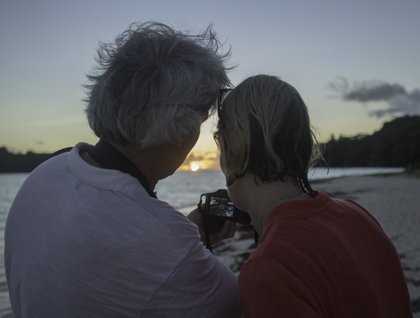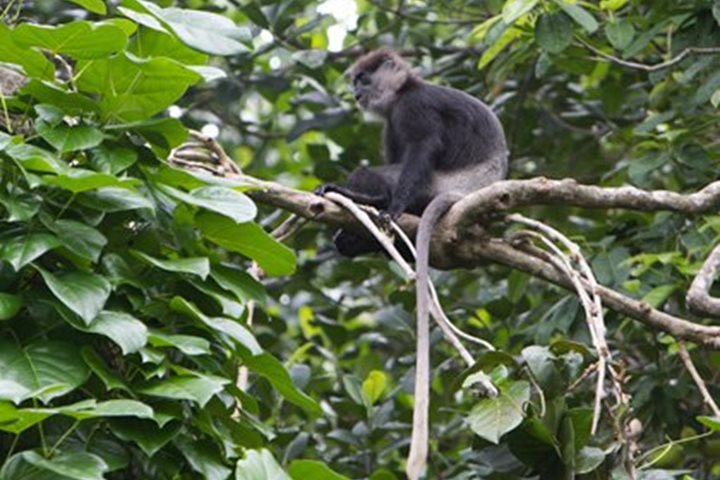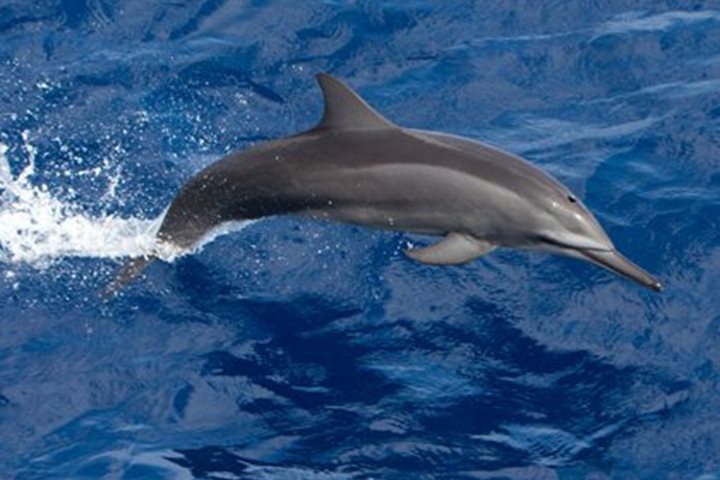The first day of our expedition across the western Indian Ocean began with a beautiful sunrise over Victoria Harbor on the island of Mahé. We left our berth at 0700, cruising out into the calm seas between the granite islands of the inner Seychelles. It is the granite that defines this lovely place, just as much as the beautiful beaches, unique forests, fascinating history, and all the other features that draw visitors here from around the world. The granite towers rise like red gold castles above the trees at the crests of the islands. Granite backs the beaches with graceful curves and arcs of stone that are the iconic images of the Seychelles. And it is the perfect metaphor for the journey we are beginning.
These ancient rocks were formed three-quarters of a billion years ago, beneath the growing supercontinent of Gondwana. Much later, as Gondwana broke up, the region that is now the Indian Sub-Continent broke loose and drifted north, leaving Madagascar and then the granitic Seychelles in its wake. Thus the rocks around us this morning were first a part of Africa, then of India, and finally left by themselves in the middle of the western Indian Ocean. This is our voyage in a nutshell—we are making a passage from one continent to another, from Africa to Asia, and in the beautiful blue ocean between them we find this island Eden that was a part of both.
A few thoughts of this grand philosophical nature may have strayed briefly through our minds as we watched our first Seychelles sunrise, but before long it was time to turn our attention to more practical matters, like getting into the gorgeous crystal blue water as soon as possible. We picked up our snorkel gear, heard a few quick safety briefings, and before the morning was half over we were out in the Zodiacs on our way to the snorkel platform—our little portable private beach. This time the platform was anchored in the lee of Cocos Rocks, just a few little trees sprouting from big red boulders of…granite! And there was more granite below the surface, but these boulders had undergone a sea change—they were covered with lacy corals and attended by constellations of bright beautiful fish. We explored this wonderful underwater landscape until it was time for lunch, which we enjoyed in the outdoor café while National Geographic Orion moved around to an anchorage off the coast of Curieuse.
We spent a long afternoon on this ruggedly beautiful island, choosing from a pleasant variety of activities on land and in the sea. Many of us rode the Zodiacs around a headland from the anchorage and made a landing on a beach at the headquarters of the Curieuse Marine National Park. Immediately upon landing we encountered one of the species that the park was created to protect: giant tortoises from Albabra Atoll in the far southwest of the Seychelles. Many of these amazing, ancient-looking beasts were wandering the grounds around the small buildings quietly munching on the grass and resting in shady spots. Quite used to human visitors, they were completely undisturbed by our presence and allowed us fantastic opportunities for photography.
From this beach, Baie Laraie, most of us hiked across the island to Anse St. Jose, the long, gentle curve of pale sand just in front of our ship’s anchorage. The trail climbed through two steep boulder gardens—granite again—and between them wandered along the edge of a mangrove forest, giving us a nice opportunity to enjoy the island’s scenery as well as its flora and fauna, including distant views of the Coco d’Mer palms that grow only on Curieuse and nearby Praslin.
By the time we all returned to Anse St. Jose the sun was setting into blazing orange clouds and our fabulous hotel crew had set up a bar and a huge barbecue dinner for us on the beach. We ate and drank, watched the sun set and the stars appear, enjoyed a small bonfire and were treated to some song and dance by members of the crew that was by turns beautiful and very amusing. Our evening, and our long day, concluded with an exploration of the universe, from the nearest stars to distant galaxies, led by Tom who guided us with his amazing laser pointer. At the back of the beach behind us, beautifully sculpted boulders of Gondwana granite slowly faded into the dark of the tropical night.







